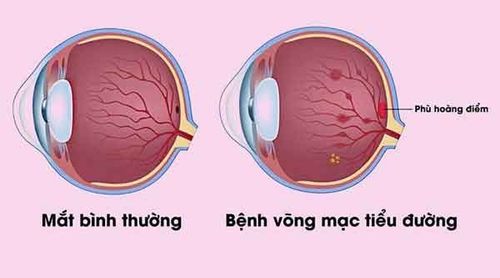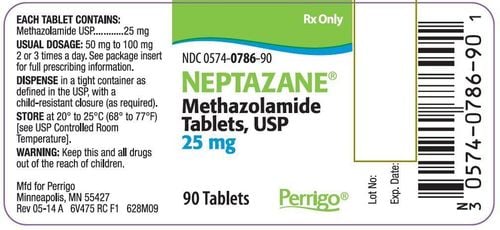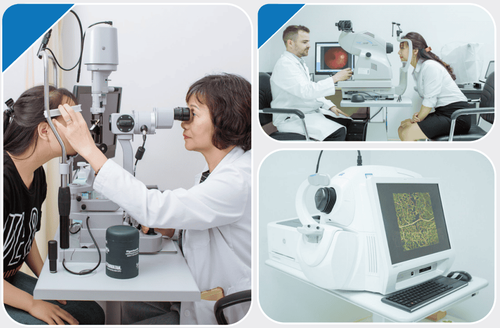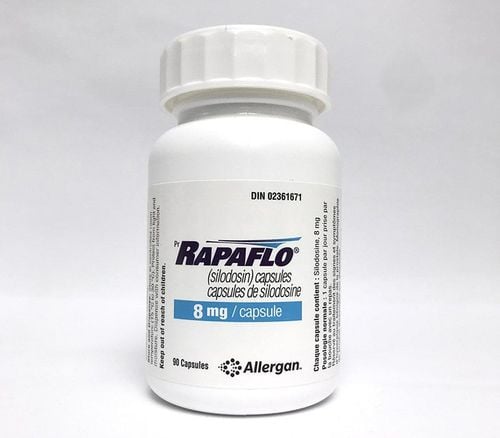This is an automatically translated article.
Glaucoma is a common disease, is one of the main causes of permanent blindness in the world as well as in Vietnam, has a great impact on public health.1. What is glaucoma glaucoma?
Glaucoma is a term used to describe a group of diseases of the optic nerve head, chronic progressive, characterized by visual field damage, optic disc atrophy and associated high eye pressure condition.Glaucoma has many classifications, currently in Vietnam it is often classified into:
Primary glaucoma (most concerned), including:
Primary closed angle glaucoma (common in Vietnam). Primary open-angle glaucoma. Secondary glaucoma: appearing after disorders in the eyes and the whole body, such as glaucoma due to trauma, uveitis, pathology of the vitreous,...
Glocom is dangerous in that if it is not detected and timely handling, there will be no drug treatment or surgical intervention to restore the damage that glaucoma has caused.
2. What are the signs of glaucoma?

Mắt đau nhức đột ngột, dữ dội, đau lan lên đỉnh đầu là dấu hiệu mắc Glocom
Typical acute angle-closure glaucoma: symptoms appear suddenly and intensely:
Sudden, intense pain in the eyes, pain spreading to the top of the head . The eyeball was as hard as a marble. Red eyes, swollen eyelids, watery eyes, fear of light. The patient's vision rapidly decreases or even completely disappears, blurred as if through a fog, looking at luminous objects see a red-blue halo. There may be systemic signs: abdominal pain, vomiting, nausea, diarrhea, sweating.... making the patient mistaken for a fever, subjectively self-treating, when they arrived at the hospital, they were completely blind. . Subacute angle-closure glaucoma: Symptoms are similar to acute angle-closure glaucoma, but less intense, sometimes with eye pain, transient headache with blurred vision, vision returns to normal through the attack. However, the frequency and severity of the attacks gradually increased, and at the same time, visual acuity decreased.
Chronic angle-closure glaucoma: Very rare, often asymptomatic, most patients when coming to the examination have severe or complete loss of vision.
Open-angle glaucoma: The disease is silently progressing chronically, in turn through each stage, the patient does not notice a decrease in vision, so they often come to the doctor at a late stage when the disease is already severe. Most patients do not have eye pain or headache, some have a feeling of heaviness, transient eye strain, blurred vision as if through a fog, looking at luminous objects see a blue-red halo, the symptoms appear in waves. The attack was short and then resolved on its own, causing the patient to subjectively not go to the doctor.
3. How is glaucoma diagnosed?
The doctor will base on the patient's clinical symptoms and conduct:Assess the patient's vision. Examine the anterior chamber angle, estimate the depth of the anterior chamber angle by Henrick's test. Measure intraocular pressure. Market measurement. Ophthalmoscopy or posterior OCT (optical tomography, evaluation of retinal nerve fibers).

Đo nhãn áp là phương pháp chẩn đoán Glocom
4. Glaucoma treatments?
Treatment of glaucoma must accurately determine the disease, because the treatment method of each disease is different.Acute angle-closure glaucoma is an ophthalmic emergency, the treatment must be carried out urgently and aggressively to lower eye pressure, relieve pain and sedation for the patient:
In the eye: Apply pilocarpine 1% - 2% 1h /time, maintain until the intraocular pressure drops, then check 3-4 times/day. Acetazolamide 0.25 g, take 2-4 tablets in 24 hours. If the patient vomits a lot and cannot drink, intravenously Diamox 500 mg x 1 ampoule. The above drugs must be prescribed by the doctor and closely monitor the patient's use of the drug.
Medical treatment only solves an ophthalmic emergency to preserve the patient's vision. With angle-closure glaucoma, surgical treatment is often required. The surgical method chosen must be appropriate to the extent and stage of the disease.
Currently, there are 3 methods of glaucoma surgery that are commonly used. Each method has certain advantages and disadvantages, the patient will be examined, consulted and specified by the doctor.
Glaucoma surgery by scleral trabeculectomy: This is a very early method, the doctor will remove a part of the sclera and iris to create an outlet for the aqueous humor, stabilizing the pressure in the eye. eye. Glaucoma surgery by the method of implanting the drainage tube: Using a tube with a length of about 1.3 cm from silicone material as a drainage tube grafted into the patient's eye. This method has some limitations, such as postoperative discomfort for patients due to eye bandages, and a follow-up time of several weeks. Laser glaucoma surgery: This is a method that does not require the use of cutlery, the doctor uses a laser to shine on the area of the corneal raft - the drainage area, creating about 100 small holes to drain the eye's aqueous humor. The whole process is very quick (it only takes 15-20 minutes), highly effective, with few complications. Laser surgery for glaucoma is a great step forward in modern medicine and is being applied very popularly. After laser glaucoma surgery, in the next 2-5 years, the patient needs to be monitored, in case the disease recurs. Open-angle glaucoma requires treatment with the aim of lowering the intraocular pressure below the level causing damage to the optic nerve and visual function. The method of treatment must be the safest, with the least impact on the patient's life. There are many topical drugs for the treatment of open-angle glaucoma, such as: beta-adrenergic canceling group, adrenergic hyperadrenergic group, cholinergic group, and prostaglandin group.
The doctor will prescribe the right medicine, but the patient must strictly follow the treatment course throughout life under the periodic monitoring of the doctor. If medical treatment does not bring results, the patient will need surgical methods.
The goal of glaucoma treatment is to prevent the disease from continuing to progress, causing damage to the optic nerve. After surgery, patients should have their eyes checked, monitor their intraocular pressure every 3 months for the first year, then periodically every 6-12 months.
For patients treated with open-angle glaucoma with eye drops, it is necessary to examine and monitor intraocular pressure every 2 months, check the visual field and ophthalmoscopy every 3-6 months. Treatment follow-up is an important factor that greatly influences the final outcome.
In many cases, although glaucoma has been detected and treated, the patient thinks that it is completely cured, so he does not go to the doctor for further follow-up, as a result, the disease continues to progress slowly leading to complete loss of vision. . Therefore, patients need to follow periodical follow-up from the time of diagnosis, persist in lifelong treatment to control disease progression, and preserve their vision.
Glaucoma blindness can be prevented by early detection, appropriate treatment, and regular monitoring. Glaucoma package at Vinmec Times City International Hospital will perform comprehensive examinations and appoint surgery (if any) for customers with symptoms of Glaucoma.
Customers can go directly to Vinmec Times City to visit or contact hotline 0243 9743 556 for support.













